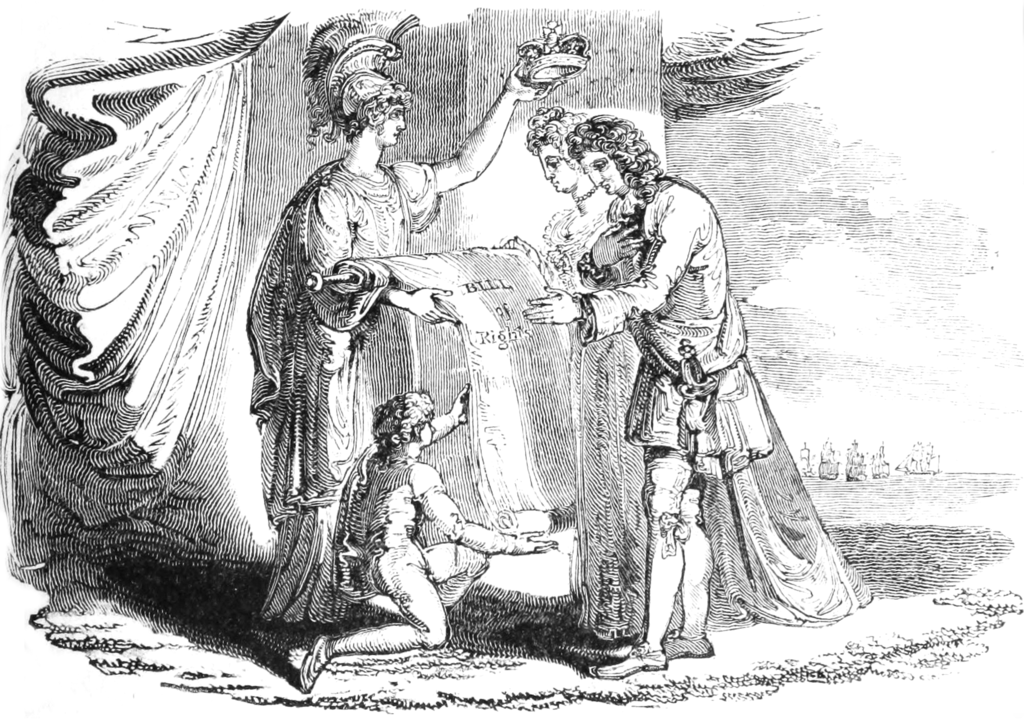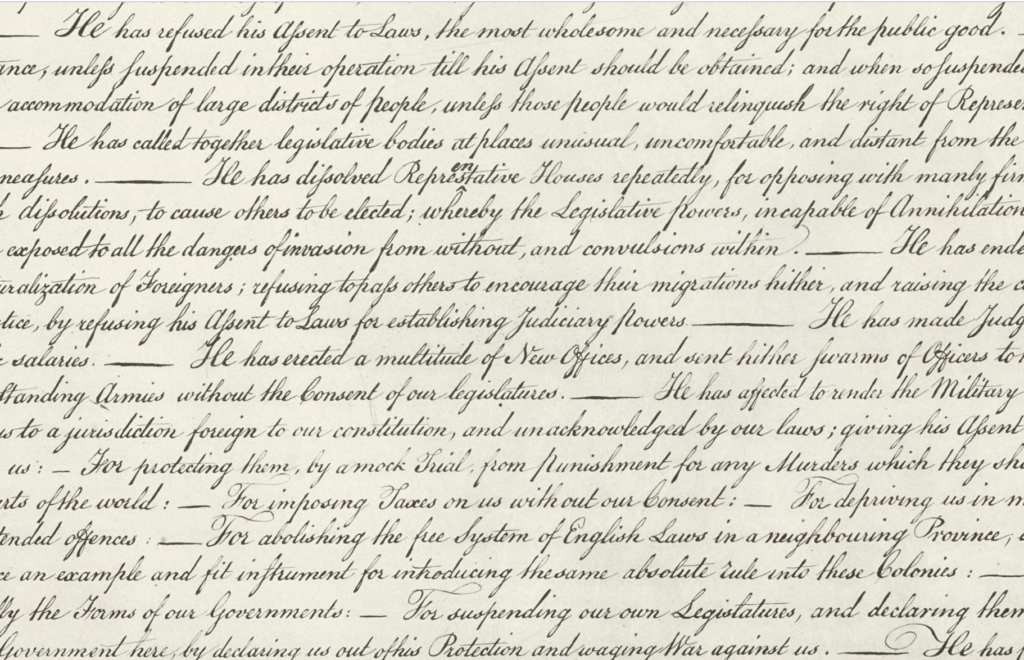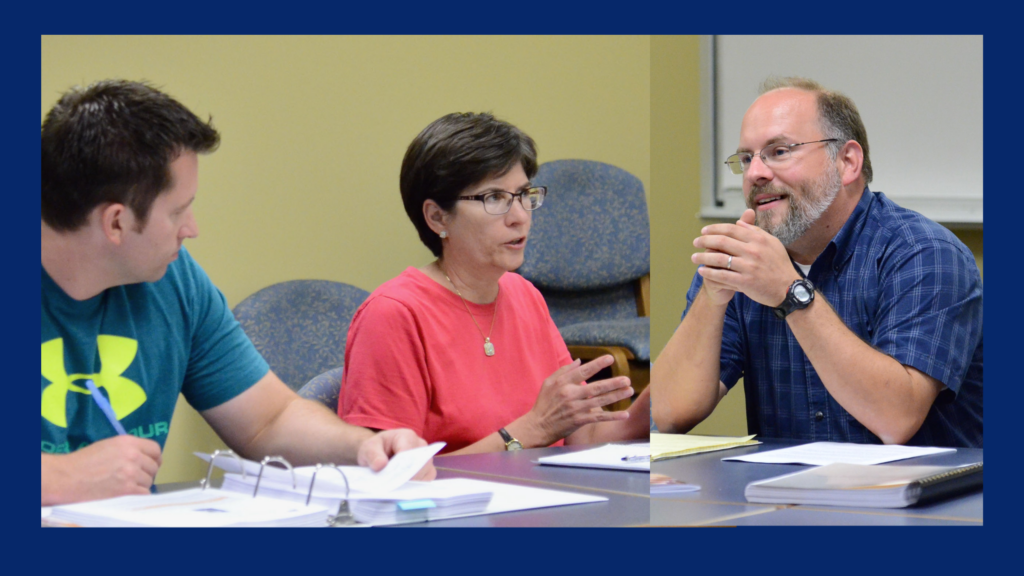Meet Our Teachers
Win Anderson

Why the Founders Wanted Limited Government
“For most of my students, the idea of federalism is a mind blower,” says Win Anderson, who teaches general level and Advanced Placement United States Government at Sauk Rapids-Rice High School, near St. Cloud, Minnesota. Most of Anderson’s students are learning in her class for the first time that the founders wanted government to be limited—and that in the United States, our federal system is one of the mechanisms that limit government. Anderson’s studies in the Master of Arts in American History and Government (MAHG) program helped her explain to students why the founders wanted this, and how the Constitution they framed accomplishes it.
She needed effective ways of explaining key concepts like federalism and the separation of powers, since she has a limited amount of time to teach them. In Minnesota, social studies is the only core subject without a standardized test. This allows schools to squeeze the study of American history and government into fewer weeks, Anderson feels, than young citizens often need.
Anderson’s school follows a trimester system, with the academic year broken into twelve-week segments. Students come to her class having taken two trimesters of world history and two of US history, not enough time to have acquired more than a fuzzy notion of what makes the American constitutional system distinctive. While Anderson’s AP students study government during two trimesters—24 weeks—her general level government students stay with her for only 12 weeks. All her students are seniors; they have not studied American government since leaving sixth grade. They desperately need the information Anderson’s class provides, because “they are about ready to vote for the first time,” she says. “Some of them have voted before they take my class!”
Limited Government Protects Citizens’ Rights

She centers her shorter, general-level course almost entirely around the Constitution. “We spend one unit studying the rights of Englishmen—rights that the colonists thought they were being denied,” she says. “I have them read just a little bit of the Magna Carta and a little bit of the English Bill of Rights”—texts the students find difficult. In part, they lack familiarity with the language of older primary texts. Yet they also struggle with the concept of natural rights. To understand that human beings are born with these rights—and that our democratic republic protects rights, but does not grant them—requires them to adjust their concept of government’s role.
MAHG gave Anderson the confidence to teach her courses using primary documents. In her general level government course, she cannot ask students to read many documents in their entirety. She has time only to guide them in a careful, thorough reading of Declaration of Independence and the Constitution. One breakthrough in students’ understanding of limited government occurs as they read the Declaration. Anderson presents them with a numbered list of the colonists’ grievances against the British monarch. She breaks the class into small groups, assigning each group a subset of the long list. Students must paraphrase, in modern English, the grievances they’ve been assigned. Then they must discuss why those actions of the English king angered the colonists.
Afterwards, each group of students comes to the board at the front of the room, posting the numbers of the grievances they were assigned under one of three headings: violations of Individual liberty, of economic liberty, or of the right to self-govern. As students classify each grievance, Anderson watches a realization dawn. “They understand for the first time that the American Revolution was not a tax revolt. No, Americans felt their fundamental rights as Englishmen—and their natural rights as human beings–were being denied,” Anderson says. “That is a ‘light-bulb’ moment for them.”

Understanding the Separation of Powers
Anderson’s AP students have time to delve more deeply into the founders’ thinking, reading four of the Federalist papers. “That’s no small feat,” she admits. “I tell students they’d better worship the comma,” or they will never follow the intricate logic of Madison, Hamilton, and Jay, as they lay out their arguments in long periodic sentences. She wants students to “struggle with” the language, using resources like the dictionary along with context clues. She places them in groups to maximize their efforts. Individual readers may pass over difficult words, but when students work in groups, reading the text out loud, one of the listeners will halt the reading to ask others in the group whether they understand the meaning of difficult words and phrases. “I still provide a lot of scaffolding in terms of guided questions, which help students know if they’re on the right track.”
Moments of sudden insight occur among the AP students when they connect concepts in American political theory with current events. In Minnesota, the November election offered an opportunity to understand why the founders thought “that power needs to be fragmented,” Anderson said. The previous Democratic governor was reelected; the state House remained in Democratic control; and the state Senate, previously Republican, became majority Democratic. This produced a unified government. Now, Minnesota legislators are busily writing and passing laws. “Some kids love the bills now being considered in the Minnesota legislature, and some don’t like them at all,” Anderson says. This occasioned discussion of another mechanism that limits the power of government: the separation of legislative, executive and judicial powers.
Partisan differences magnify the tendency of separated powers to limit governmental activism, while partisan alignments shrink it. Discussing this helps students see that “elections have consequences. “You don’t always get your way. And just because you’re living under laws you don’t like doesn’t mean that your rights are necessarily being violated. You’ll get your turn later.”
The last election reintroduced divided government at the federal level, and “students struggle to understand why, in Congress, many things are not getting done.” Anderson helps them consider, often for the first time, the possibility that the legislative process can benefit from a slowdown. “Sometimes, things shouldn’t get done,” she tells them. “Sometimes, things should be repealed.”
Federalism and the Electoral College
The Electoral College system presents another source of puzzlement. Students “cannot fathom why we don’t just add up all the votes nationwide, and then declare a winner.” Anderson tells her students that the design of the Electoral College reflects the founders’ preference for a federal system, in which states retain a degree of independent authority. “We talk about why it can be good that Colorado is experimenting with legalized marijuana, while South Dakota is waiting to see the result” of the experiment.
Ordered Liberty and Civil Conversation
“In my MAHG classes at Ashland, I learned that beautiful phrase: ‘ordered liberty,’” Anderson says. The framers wanted to create a system of ordered liberty, one with “enough authority to keep the peace, prevent violence and the theft or destruction of property,” but not so much as to constrain the people’s freedom. How could they accomplish this? In part, they structured a system of carefully balanced powers. They also hoped to cultivate “a virtuous citizenry,” citizens “who can disagree without violating the law or destroying their relationships.” In MAHG, Anderson not only came to understand the founders’ design; she realized that as a government teacher, she helps to ensure that their design still works.

“The professors do a really magical job of dealing with the ideological diversity of the teachers in the program.” They keep seminar discussions “apolitical” while helping teachers understand the thinking of earlier generations. Anderson admires the professors’ ability to begin class with a “mini lecture” explaining the intellectual, political or historical context of a document, providing background information teachers might not even know to look for. Briefed in this way, all the teachers begin the seminar discussion “on the same page.” Individual teachers bring differing perspectives, noticing different elements of the document. “But the professors help us all to see the big picture.”
In the big picture, elements of the Constitution that puzzle students are part of a unified and logical design. One way of encouraging civil political conversation in America is to help students discover this logic. “Citizens who don’t understand the Constitution are likely to be overly outraged by some political news—and insufficiently outraged by other news,” Anderson says.
Perpetuating Our Constitutional System
“I like to remind students of the ways in which the framers anticipated potential problems,” she adds. Take, for example, the Electoral College system. “What happens if no candidate gets a majority of electoral votes?” Students read in Article II, Section 1 of the Constitution that in such a case, the decision goes to the House of Representatives. Anderson asks them, “Why did the framers give this responsibility to the House?” Students who’ve been paying attention respond, “Because House members have always been directly elected; they have two-year terms; and they’re supposed to be more responsive to the people.” Then Anderson can point out, “Wow, weren’t the framers smart? Rather than leave us with a constitutional crisis when there is no electoral majority, they gave us a safety valve. Is it ideal that the House choose the president? No, it’s not ideal,” she says; “but it’s a lot better than civil war. “
Above all, Anderson hopes students learn that “the rule of law is not upheld magically; it’s upheld by adherence to constitutional principles.” Without the Constitution’s safeguards against tyranny, and without the avenues it provides for dissent and redress of grievances, “things crumble pretty quickly and it gets awfully ugly for regular people like you and me. It is in our own best interest—and the best interest of our posterity—to keep fidelity with constitutional principles.”
